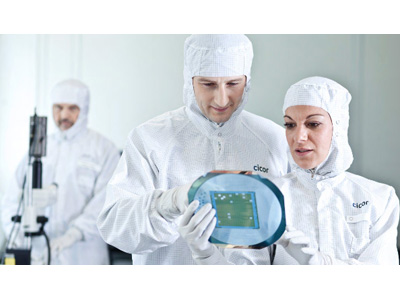In the first quarter of 2019, Cicor will open a technology center for printed electronics at the Bronschhofen site in Switzerland and will invest around CHF 1.5 million in further expansion over the next two years. The technology enables a wide range of conductive, non-conductive and biocompatible materials to be printed on a variety of substrates. At the beginning of 2019, the plastic injection molding activities in Singapore (SG) will be merged with those in Batam (ID). With this step, the Batam site will also be upgraded to a "best-in-class" production facility for high-precision components including coating.
Cicor has also installed a new laser trimmer at its Ulm (DE) site. The machine for the exact determination and adjustment of resistances is equipped not only with fast "flying probes" that can be moved freely in all directions, but also with an automatic loading and unloading system. The system optimally manages the balancing act between fast prototype production and series production with higher quantities. This can be achieved with three high-precision, individually controllable measuring probes for flexible contacting of components. The trimmer program is created and monitored within a very short time via an exclusively for Cicor programmed interface. A substrate handler in combination with an automatic image recognition system enables the autonomous processing of complete production batches.
The increasing number of electronic devices in more and more applications requires new manufacturing technologies to be developed and industrialized. Flexible additive manufacturing processes play a key role in substrate manufacturing and connection technology. The unique printing technology used, enables a wide range of conductive, non-conductive and biocompatible materials to be printed on a wide range of substrates and forms. In addition, new opportunities exist for interconnect technologies that can lead to performance improvements and cost optimization.
The integration of the circuits into three-dimensional surfaces often eliminates the need to use an additional substrate. Compared to the methods used today to produce such three-dimensional circuit carriers, the technology chosen by Cicor offers a significantly wider variety of printed and printable materials. Devices for medical, aerospace and IoT applications can be significantly reduced in size by using this technology.
With the opening of a technology center for printed electronics in Bronschhofen, Cicor is underlining its ambition to become the technology leader and its claim to be able to offer customers new, innovative solutions in addition to proven technologies.

